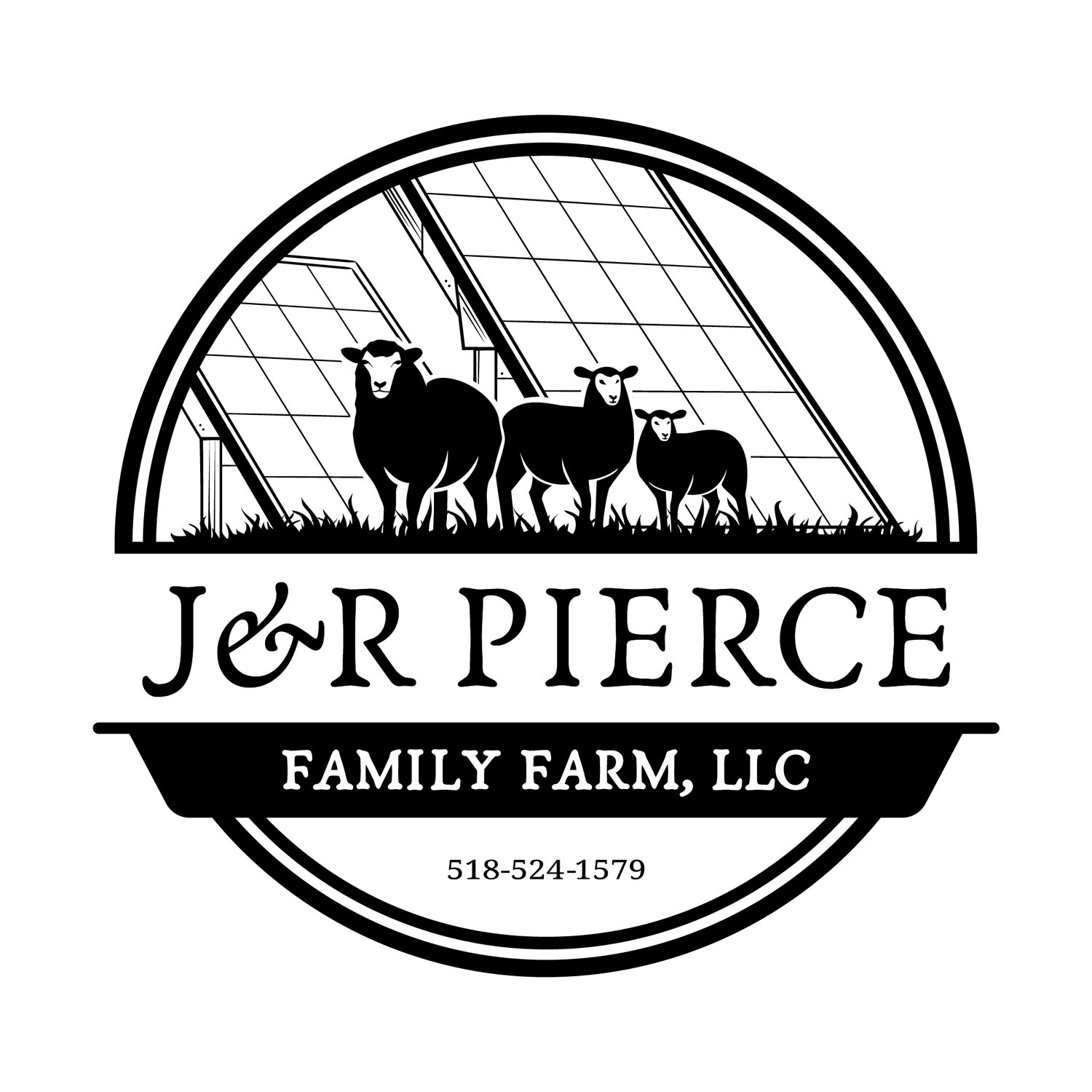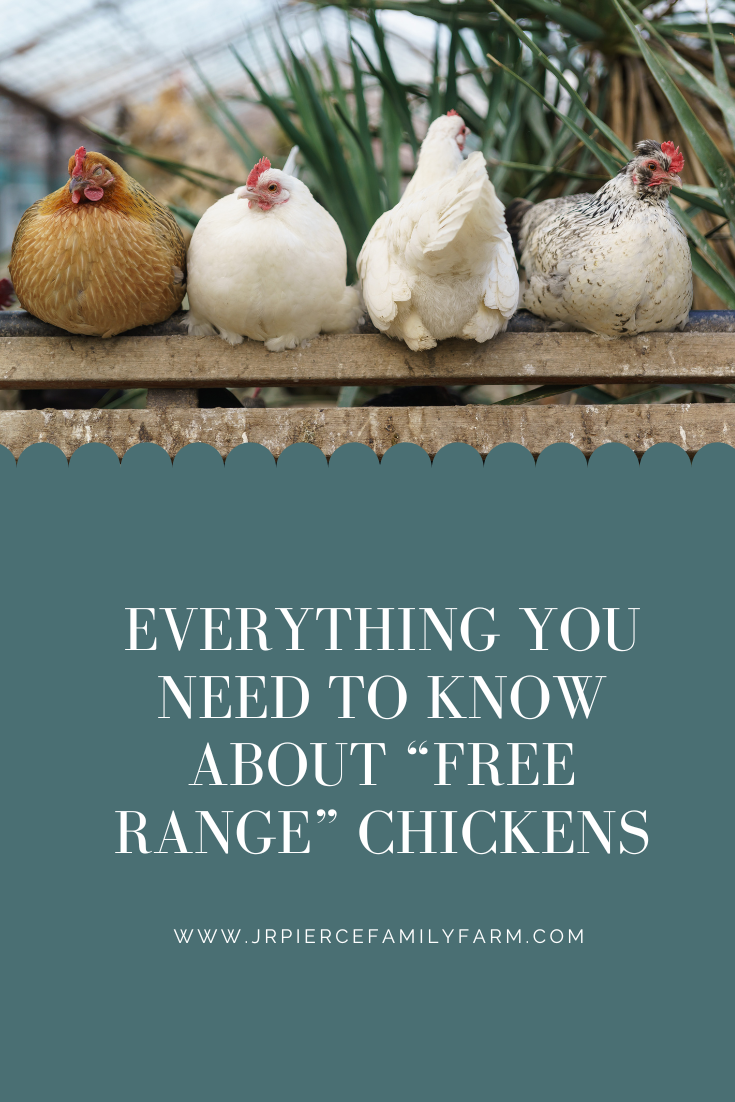Behind the Food Label: What Does “Free Range” Mean?
On today's Factual Friday, we're free-rangin' it.
This is another common food label that you'll find in food marketing, along with the ubiquitous "cage free."
Here in the US, the term "free range" is only regulated for poultry, so if you're buying chicken or eggs, this is where it will come into play.
At its core, free range sounds…really nice. Chickens are allowed to frolic and roam freely, doing as they wish throughout the day. It calls to mind the idyllic pastoral landscape, with chickens pecking at the grass and bugs, scratching in the dirt, wandering around amidst the cows and sheep and pigs.
In many cases, that's what small farms and homesteads all over the country are still doing with their chickens, especially here in the North Country.
But if you're buying your eggs at the grocery store and they're labeled "free range," unfortunately, that's probably exactly what's not happening.
**J&R Pierce Family Farm is a participant in the Amazon Services LLC Associates Program, an affiliate advertising program designed to allow sites to earn advertising fees by linking to products on Amazon. I often link to Amazon when recommending certain products, and if you choose to purchase, I may earn a small percentage of the sale. It costs you nothing extra, and all recommended products are ones that I personally vouch for.**
What Does "Free Range" Mean?
The problem, once more, comes down to the USDA. To be considered free range, the birds must have access to the outdoors for more than 51% of the animal's life.
See the problem with that statement?
Believe it or not, the piece I take issue with isn't the 51% part. Although that doesn't sound like a lot, for broiler animals, it's actually substantial.
Chicks generally need to be under a heat lamp or heat plate until they're fully feathered (depending on the climate and breed, sometimes as many as three to eight weeks) and ready to be outside. Meat birds are often slaughtered at eight weeks and we tend to keep ours under heat for at least two to three weeks - so really, the fifty percent is a non-issue.
The problem is "access to the outdoors."
The USDA does not specify how much access or what that access needs to look like. It could be as simple as a door kicked open. The Certified Humane program goes a little further, requiring producers to give their chickens at least six hours of "outdoor access" and at least two square feet of outdoor space per bird. But it still doesn't really guarantee that the chickens ever go outside - just that there's the opportunity to do so.
Interestingly, the US lags behind many other countries when it comes to these labeling requirements. In the European Union, for free range, hens must have "continuous access to open-air runs," and those open-air runs must be covered with vegetation and not be used for other purposes (except other livestock grazing, wooded pastures, or orchards). The hens must have access to 43 square feet per bird.
But back in the US, without specifying what "free range" means, you could be buying eggs from chickens who only had access to a gravel lot their entire lives.
As a result, many people now largely view the term "free range" as a marketing term - not actually a husbandry term. Nobody really knows what it means.
What About Cage Free Eggs?
The same goes for cage free. This is another term that's not clearly defined. Don't get me wrong - I think cage-free is definitely better than caged, as the standard for caged poultry per the United Egg Producers is that each bird is given just 67 square inches of space (about the size of a piece of lined paper). So no cage is probably better.
But cage free eggs are still not necessarily more "natural" or more humane. Even in cage-free facilities, it's common for hens to spend their entire lives in dark sheds with artificial lighting.
Similarly, the Certified Humane program says that each "cage-free" hen must have around 1.5 square feet of space and "minimum ammonia levels at a maximum of 10 ppm". But they're still being raised indoors.
Do you see the problems with these labels?
Again, it all comes back to educating yourself and getting to know your local farmer.
There's absolutely nothing wrong with buying regular, run of the mill eggs at the grocery store - non-free ranged, caged, whatever it is. It's about making purchasing decisions that align with your budget, your ethics, and your preferences. Full stop. I'm not going to tell you how to eat or spend your money.
But the problem we run into again and again (and one that you'll likely see as a repeat performer in all of these food label Factual Fridays I've been posting) is that regardless of how you want to spend your money as a consumer, you have the right to know what you're spending your money on.
So many people pay top dollar at the grocery store for eggs that they think were raised humanely because they have a "free-range" label slapped on them. But unfortunately, "free range" really doesn't mean diddly squat. You're being duped by clever marketing.
The solution? Know. Your. Farmer.
Why You Need to Get To Know the People Who Grow Your Food
During COVID-19, we saw a huge surge in demand for eggs and chicken on our farm. As we were just starting to spread our wings in sales to the public, we were excited by this. We thought maybe it marked a return to local eating - were people really going to start shopping local again?
Unfortunately, as our food supplies began to normalize, some of that demand dropped off (though we did retain so many of our customers that we still have today, something we're immensely grateful for).
Buying from a local farmer isn't always the most convenient. You have to arrange for a pickup or delivery (or go to a farmer's market). But it's the most transparent. You get to see the animals and see how they were raised.
Pastured Poultry and Animal Husbandry
We're always happy to show customers our chicken tractors, which are mobile chicken pens that allow the animals constant outdoor access and the ability to be moved to fresh pasture every day (we don't allow our chickens to roam in the "idyllic, pastoral" sense mentioned above simply because foxes, hawks, and weasels are a very real threat, and we've had hundreds of birds killed off our farm as a result).
But pastured poultry yields the same results - healthy, happy chickens - as the full-scale roaming anyway, and we don't have to worry about any macabre barnyard massacres as we did in the past.
Tangent aside, we recognize that buying from a farmer isn't always convenient, but you do become part of a small but proud community. You support the local economy. And in this post-COVID era, as I often try to explain to people, buying local is getting more and more affordable.
We focus so much on gas prices at the pump, but really, the prices that matter are diesel. We've seen massive fluctuations in gas prices this election year, but diesel has remained more or less steady. It's not the price of gas that influences food costs at the grocery store - it's diesel.
Other variables that influence food prices? Extreme weather, fertilizer prices, war, animal and plant disease, and global trade issues.
You're going to see some of these at a smaller scale with your local farmer. Sadly, many of these do still trickle down to the farmer in the form of higher grain prices (and as we've discussed in earlier posts, chickens are monogastric species that do need grain - no amount of "free ranging" will help them meet their dietary needs, unless you have access to a significant amount of grubs or other protein sources!).
But these factors tend to be more muffled. We have more control over our inputs and outputs because we're smaller. When egg prices skyrocketed by 70% over the last few years, much of this was due to a severe outbreak of avian flu. That wasn't something we had to deal with.
Looking Forward
We had gotten rid of many of our laying hens simply because, until that point, our local egg market had dropped off. The cost of grain was still high, but with customers buying most of their eggs at the grocery store post-COVID, we just didn't have enough of a customer base to justify feeding a huge flock of hens.
As grocery store prices climbed up and up with no end in sight, so many of our customers came back to us wondering if we would sell them eggs because ours were not only more sustainable and locally produced, but they were also much cheaper. With no laying hens, we were sad to say no - we couldn't help them.
We'll likely venture back into raising laying hens and selling eggs eventually, but this little interlude of an anecdote highlights the importance of establishing relationships with your local farmers.
Remember, at the end of the day, it's those relationships that matter. If you want to make a purchasing decision that does right by the planet, the community, and your health, start building relationships with the people you grow your food!





